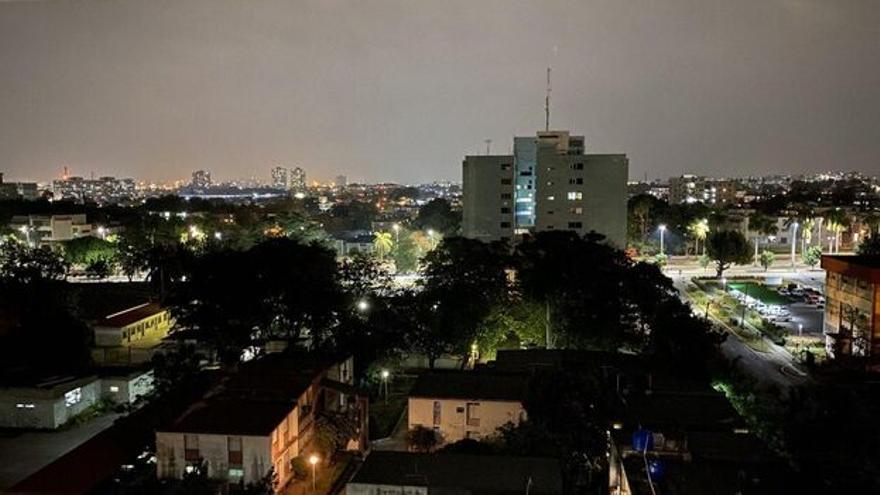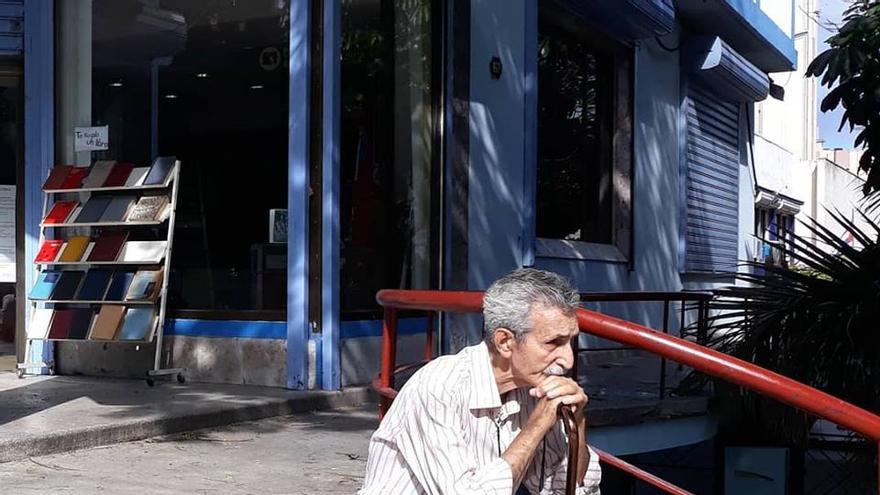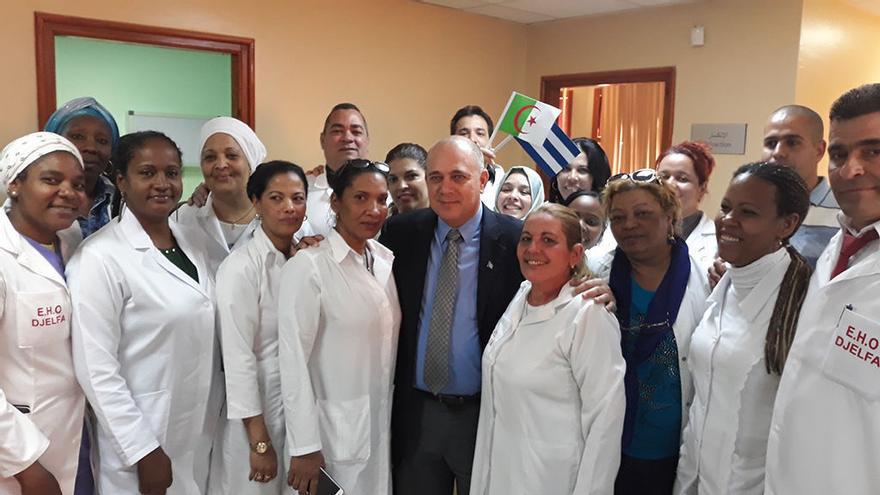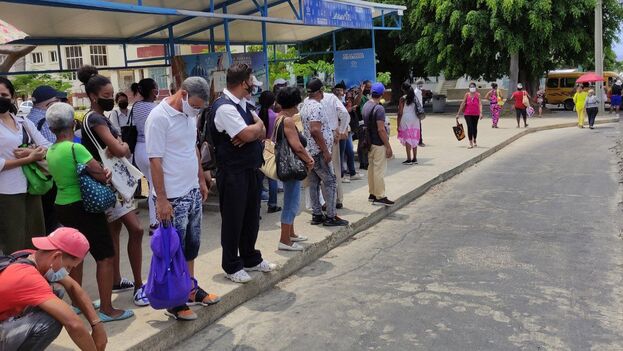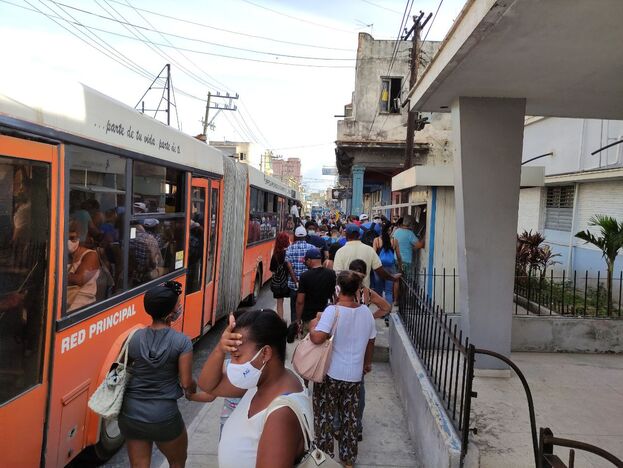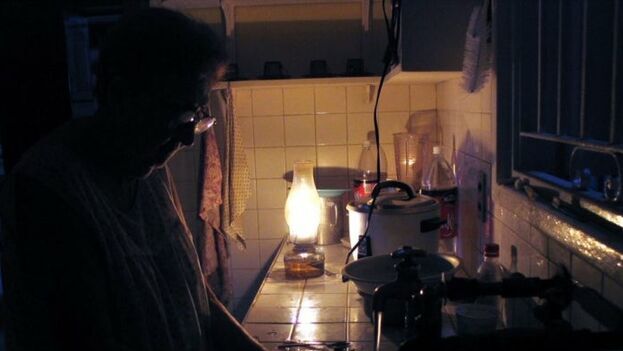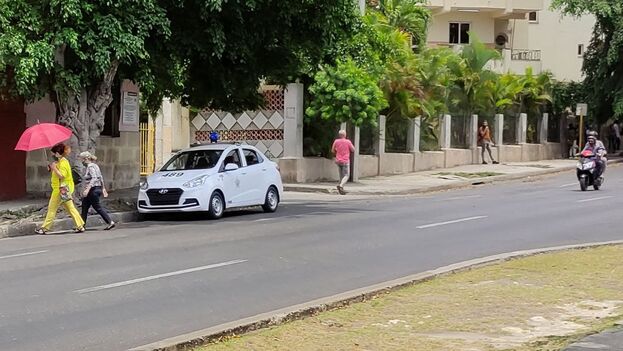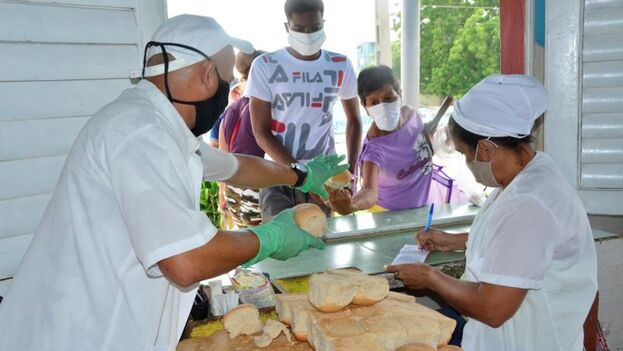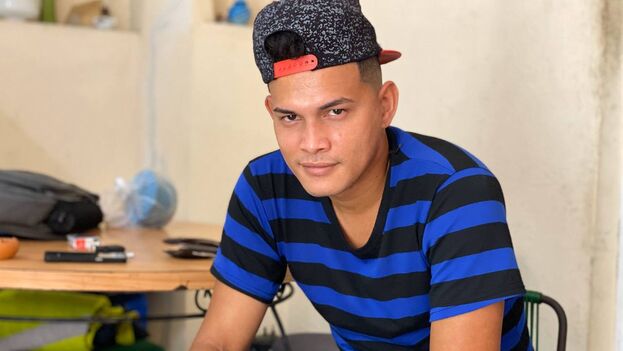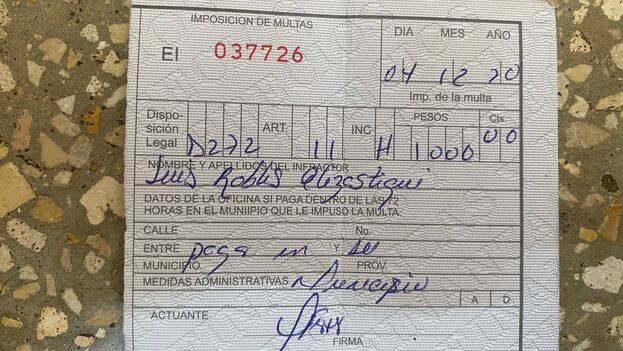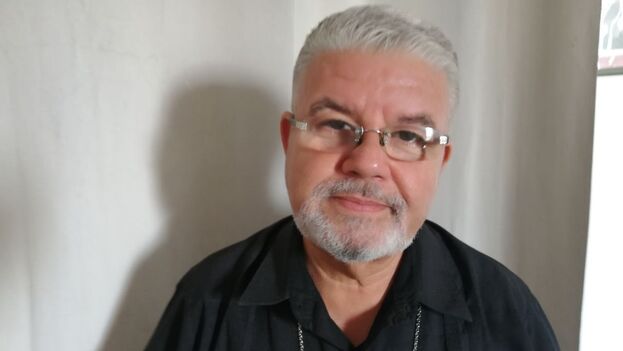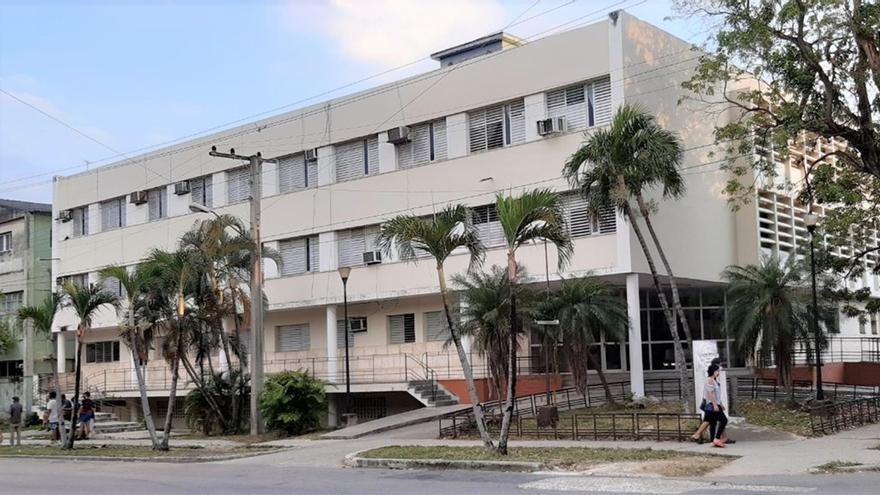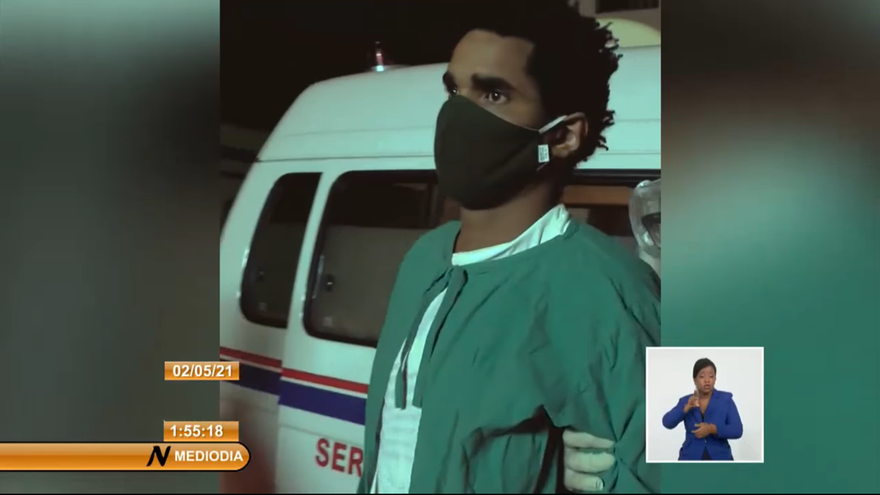I can speak properly, since I am one of them. I have been in this distant country for several years, much to my regret, away from my family, with the mistaken thought that it would improve my standard of living and carrying on my back the burden of knowing that a slave regime wins at my expense.
Most of the people I have met in my internationalist journey leave Cuba with a mind full of hope and the same goal: a desire to progress economically and professionally, looking for opportunities that our own country constantly denies us.
But being here for so long has made me change my perception, position and attitude towards those with whom I signed a contract that very profitable, but not equally for both parties. continue reading
According to the contract revealed in last May’s Official Journal of Algeria (equivalent to the Cuban Official Gazette ), the Cuban regime receives almost 65 million euros per year. The four hospitals included in the agreement are strategically located in the four cardinal points of the North African country, to offer viable access.
The largest of them, the primary national center for Ophthalmology — the specialty that contributes the most money — is in Djelfa, 300 kilometers from the capital, Algiers, and is the first of the hospitals founded for us to work. Located there is the head of the national Maternal and Child Care Program (PAMI), as well as the head of the national Communist Party of Cuba, and there is a transit house, that is, accommodation for professionals when stopping off from other places (because distances they are huge). To the east is the Bechar hospital (where the Urology program takes place), to the west, the El Oued hospital, and to the south, the Ouargla hospital (the Oncology program).
The Cuban personnel who work in these hospitals answer to a double leadership. On the one hand, the Cuban leadership, an extensive chain of useless people who roam the centers with no other task than to point the finger and note the merits sweated by others. These bosses should demand from their Algerian counterparts the supply of the necessary inputs for the full operation of the center, since according to the signed agreements these are the responsibility of the Algerians, but the opposite phenomenon occurs, very similar to what has happened in Cuba: they do not demand the means of work and opt for the benevolent whip of the persuasive verb to fall into the great stupidity of doing more with less.
With shortages all year round, with obsolete and poor quality surgical instruments, with old equipment that constantly needs to be repaired, with questionable statistical requirements, protected for eye surgeries in a classification, of greater or medium complexity, made by someone who is not even a doctor and much less an ophthalmologist, they prefer the complicit silence that guarantees a position and its benefits over demanding a correct classification based on international standards. But of course, it would be putting your personal interest at risk.
It is much easier to demand that a doctor operate with a lamp and degrade his professionalism because for this mission, the doctor, more than a person, represents a number of benefits that later become fresh and green money, the kind that the regime likes. The working conditions are bad, the demands are high and the discourse, victimizing and old-fashioned, is that this money is needed by the country.
As for the PAMI, it is in the worst conditions, since it is spread over so many places in this desert geography, that on many occasions the closest town where another Cuban lives is several dozen kilometers away.
Those who work in Ophthalmology live in residences near the hospital and with very good conditions, but those who work in the other programs, specifically those of the PAMI, stay in homes that are very bad and with a total lack of resources.
The mother-child program is a crude attempt to copy a primary health care system like the one we have in Cuba. The high command’s eyes shine from trying, because it would mean more staff here and, therefore, more money in their pockets. They do not take into account the precarious conditions to which they subject professionals: non-sterile neonatal rooms, delivery rooms where cats roam like people waiting for a fleeting placenta to fall to the ground and serve as food for their offspring, rooms of supposed intensive therapy where sterilization protocols are not followed and where the constant passage leaves the doors open to any bacteria.
Algeria’s public health system is quite disastrous, even if it receives a lot of money. Good professionals generally emigrate or go to the private environment at the slightest opportunity, where conditions are much better. We Cubans are where Algerian professionals do not want to be for obvious reasons: complex places, difficult to access or hostile climates.
For the rest, most of the population that is cared for by us is quite grateful and we do not have serious problems with our Algerian colleagues (at most, some affairs of skirts and jealousy).
Although we work side by side with Algerians, we must adapt to their slowness. When our hands are not enough to save a life, even knowing that we have done everything possible and the relatives themselves touch our shoulders and do not scold us, the questions from those who should give us more encouragement rise so much that they hurt us deeply.
They do not taking into account the shortages, the late payment for transport, that we did everything we could, or that a hospital should have five doctors including three Algerians, and those places are not occupied, and only two of us take on all the work. It simply makes us feel worse than we already do by not being able to exercise the art of keeping someone alive.
With all this, they give themselves the luxury of lying to us like children and in many cases keeping us here because no relief appears, as if it were our fault, as if we were condemned to remain in the eternal fire of exploitation.
The truth is that everyone already knows what this is and this mission is far from being the paradise they paint it to be. To make matters worse, and it well known, the salary that we earn and that they must pay us monthly is never paid in a timely manner. In 2020 we were paid only four times with absurd justifications for unexplained delays and surrounded by complicit silences. Nobody stops working, operating, keeping watch and, in the same way, nobody should stop eating or having personal hygiene. In addition, they require you to be connected by a telephone line that you pay for yourself. How do we do it?
Now, a new phenomenon increases our sorrows and worries. With the monetary unification, automatically and without absolute awareness of the effects, our accounts were changed from CUC (Cuban convertible pesos) to Cuban pesos and new astronomical rates appear on the horizon and in MLC (freely convertible currency such as dollars and euros) to send to Cuba the boxes with the household items that we buy here with our sweat and sacrifice to make our homes (in Cuba) a little more comfortable.
The most realistic conclusion that can be drawn is that this mission is led by profoundly incompetent people, starting with the top boss, Dr. Reinaldo Menéndez García. Defining himself as strict and revolutionary, he accepts bribes, for example, from those in comfortable positions who prefer to stay here longer than stipulated by law, in an exercise of double standards.
With an always wild speech, he hides his total contempt for us, blatantly lying and wanting normality to appear where there is none, supposedly taking steps to benefit us and that, coincidentally, do not bear fruit, while we all know the good life that he gives himself.
Human rottenness advances, and when you see so many human miseries together you become disenchanted and, either you join that or decide, as Nietzsche said, to leave the herd. That is why I write and make known what here is a hidden reality for the world: this mission is, as Estela Reynolds said, a large poop painted in glitter.
____________
COLLABORATE WITH OUR WORK: The 14ymedio team is committed to practicing serious journalism that reflects Cuba’s reality in all its depth. Thank you for joining us on this long journey. We invite you to continue supporting us by becoming a member of 14ymedio now. Together we can continue transforming journalism in Cuba.

![]() 14ymedio, Juan Diego Rodríguez, Havana, 18 May 2021 — Cuban families describe Vietnamese rice sold in the rationed market as shriveled, with a bad smell and little expansion when cooked. “Here we call it ’the military man’ because it comes in platoons, there is no way that it will fall apart,” Manso García, a traditional rice producer from the Rodas area, in the province of Cienfuegos told 14ymedio.
14ymedio, Juan Diego Rodríguez, Havana, 18 May 2021 — Cuban families describe Vietnamese rice sold in the rationed market as shriveled, with a bad smell and little expansion when cooked. “Here we call it ’the military man’ because it comes in platoons, there is no way that it will fall apart,” Manso García, a traditional rice producer from the Rodas area, in the province of Cienfuegos told 14ymedio.
